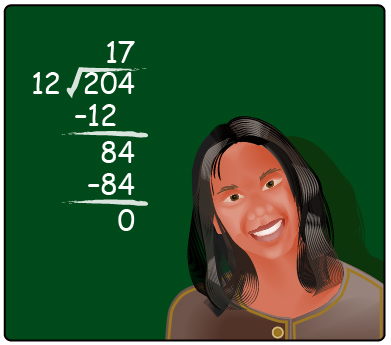Explore
In Share 1 you may have concluded that factors of a number divide “evenly” into the number. For instance, 2 divides evenly into 16, but 5 does not. A more formal way to say this follows:
- When a number is divided by one of its factors, the remainder is zero.
- When a number is divided by a non-factor, the remainder is not zero.
The following examples illustrate this fact.
| Division Statement | Multiplication Statement | Conclusion |
| 15 ÷ 2 = 7, remainder 1 | 15 = 2 × 7 + 1 | Because the remainder is non-zero, 2 is not a factor of 15. |
| 15 ÷ 3 = 5, remainder 0 | 15 = 3 × 5 + 0 | Because the remainder is zero, 3 is a factor of 15. |

The idea that dividing a number by one of its factors results in a remainder of zero also applies to polynomials. So, how do you divide polynomials?
You may have learned “long division” of numbers in elementary school. The same process can also be used with polynomials.
Watch Polynomial Long Division to see how long division of polynomials is related to long division of numbers.

In the polynomial long division you just watched, both long-division questions resulted in non-zero remainders. This indicates that neither solution was a factor.
The result of dividing a polynomial can be written as a statement in the form ![]()